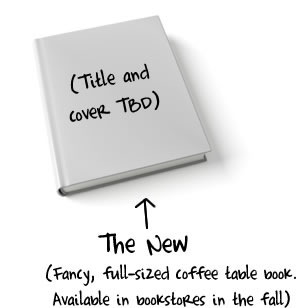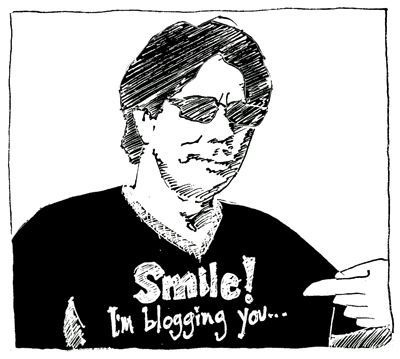Illuminating the Digital Manuscript

James Governor tackles the concept of digital media consumption in a familiar and appealing way in his March 10 blog post, Reading is Writing: Illuminating The Digital Manuscript. He opens with a reminder that reading, albeit a solitary practice on the simplest level, usually tends to be[come] considerably more interactive than the initial visual/mental textual interface:
“there is an other side to the book, the canon, the stories we tell each other. We like to discuss books. We like to write things in the margin – we even have a name for this activity – marginalia, a practice as old as the Illuminated Manuscript. Most of all though, books help us learn – particularly when we share them.”
This echoes the reflection I recently offered to the smart folks over at Vook.com. They had solicited feedback from customers to see what we think they should be improving in order to help design a more appealing digital storytelling experience. I offered quite a bit of feedback, but the crux of my advice was to better leverage the full potential of interaction and marginalia allowed by the connected, digital publishing format.
The first generation vooks are basically digitzed books, e-books, with periodic video clips peppering the text that readers can opt to view as they read the text. Of course, hyperlinked text is present and the symbolic opportunity to connect to Twitter and Facebook and post your reactions to the vook, ideally offering a little free advertising to the company. This is a necessary first foray into digital storytelling, but it’s scarcely superior to reading the print version. And in many ways, it’s an inferior experience because there’s no handy way to add marginalia or share the reading experience with others.
After reading Gary Vaynerchuk’s print edition of Crush It! then re-reading and watching embedded videos in the Vook edition of Crush It! my review (video above) was intended to offer timely feedback to the team producing these digital stories, but also to jump start their thinking. By capturing screencasts, I tried to hint at a more engaging way to open up and amplify the text. At present, the format is very solitary. Very locked up in a text-based silo with some video audio visual candy to make the reader feel like the experience is sexier than reading the print version.
James Governor grumbles that the “big problem with most current efforts in digital publishing [is that] they don’t learn from the web. We can bookmark a link on the web but why can’t we bookmark a digital book? It’s not enough to view source, you need to be able to share it and mark it up. What the hell good is XML if it’s just for layout?” While reading Crush It! or my current vook, Seth Godin’s Unleashing the Super Ideavirus, it should be quick, easy and fun to share my marginalia with others. This requires two important additions to the current vook experience:
1. a seamless scrapbook component should be integrated into the vook so that I can underline/highlight, jot notes, link to related content (including Twitter, Facebook, Delicious, blog posts) and generally capture/contribute my interactive reading, viewing and listening experience;
2. a seamless, quick and easy sharing tool.
I know that both of these suggestions are easier requested than developed. And I know that copyright issues need to be resolved with both. But these challenges should inspire innovation, not inhibit it. Whether I want to tweet, email, quote in an article, embed into a YouTube video, include in a presentation or share an audio excerpt via mobile phone, I would like to be able to open up my reading experience to share with others.
Obviously sharing in this way needs to be limited to excerpts so that copyright is respected and readers can’t skip buying the vook by accessing the full vook when shared. However, if/when I share an excerpt, the person I share with becomes a likely purchaser. The viral sales potential is huge! Especially if the shared excerpt makes it easy to buy the vook. And it would be amazing if vook buyers could then be granted access to the marginalia annotated versions of others. In other words, I decide to buy a book based upon a screencast/audio clip from a friend. I buy the vook, but rather than being limited to the original version, I can also toggle on/off the marginalia of my friend if my friend gives me permission. Likewise, I could get permission from other readers as well to access their marginalia. The practical application of this in a learning environment would be extremely valuable. A professor could enable students in his/her class to access their marginalia and follow their links, effectively supplementing the original text in an interactive footnoting environment.
I’ve become verbose, and since I’ll inevitably return to this topic before long, I’ll wrap up. But a few last quick thoughts. Vooks (and other digital book publishers) should at the very least plan to:
- produce an integrated text, audio and video edition,
- enable digital marginalia and
- enable sharing.














